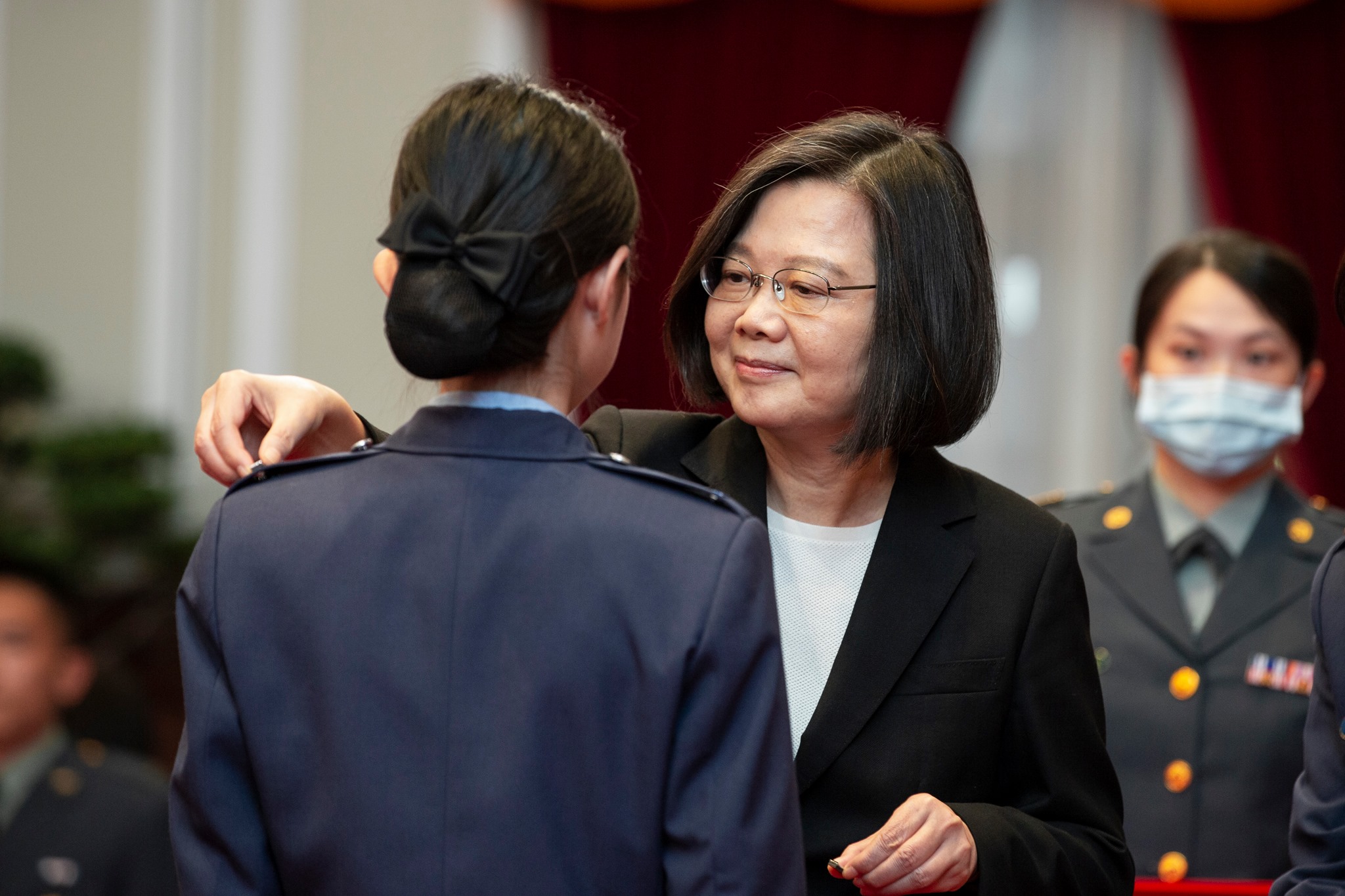While the external threat to Taiwan appears to be growing, Beijing could also increase its cooperation with local proxies to undermine the island-nation’s social stability and discredit its democracy.
Unable to win enough hearts and minds in Taiwan after eight years of closer engagement and unwilling to explore a more accommodating modus vivendi with its democratic neighbor, Beijing in recent months has adopted an increasingly maximalist stance on cross-Strait relations that could mean trouble for the region in the coming years.
Deep frustrations, coupled with nationalistic fervor, an upcoming party congress in which Chinese politicians vying for key positions within the Chinese Communist Party (CCP) will feel compelled to demonstrate their intransigence on the Taiwan “question,” and uncertainty regarding the future direction of U.S.-Taiwan ties under incoming president Donald Trump, have led the leadership in Beijing down a dangerous road, one in which the desire to “punish” Taiwan for the choices its people have arrived at by democratic means supersedes the incentives for dialogue and stability.
Through all this, Beijing has blamed the Tsai Ing-wen administration for the chilled relations, primarily due to her refusal (so far backed by the Taiwanese public) to acknowledge the so-called “1992 consensus” and the “one China” framework. The leadership in Beijing has also refused to listen to the advice of some of China’s own thinkers, who argue that a mere term (“1992 consensus”) should not be an impediment to constructive ties, something that President Tsai has repeated on several occasions since her election in January 2016.
Therefore, with open dialogue between the two sides unlikely to materialize anytime soon, Beijing has decided to tighten the pincers on Taiwan in order to isolate, demoralize and undermine it. To this end, the Chinese leadership is relying on two main strategies, one external and the other one internal.
External Strategy
Among other things, Beijing appears to have resumed its policy, put aside during the Ma Ying-jeou administration (2008-2016), of attempting to steal Taiwan’s official diplomatic allies and to prevent Taiwan from participating in multilateral fora such as ICAO and Interpol. It has also pressured members of the international community to send Taiwanese nationals suspected of crimes to China rather than to Taiwan, and has leaned on democratic governments so they would abandon their democratic principles (and Taiwan) for the sake of better (or the resumption of) relations.
Escalation has also led to more frequent and alarming military activity near and around Taiwan in the West Pacific and in corridors between Taiwan and its neighbors Japan and the Philippines. This includes the transit today (Jan. 11) of the Liaoning, China’s first and only aircraft carrier, in the Taiwan Strait, which at its narrowest is a mere 130 km wide. Although the carrier and accompanying fleet did not enter Taiwan’s territorial waters, they did penetrate Taiwan’s Air Defense Identification Zone (ADIZ) from the southwest at 7 am after completing exercises in the South China Sea last week.

A PLA Navy aircraft is pictured on the deck of the Liaoning aircraft carrier.
(Why President Tsai thought it was a good idea for the secretary-general of her National Security Council to accompany her on her trip to Latin America when she knew that the Liaoning was about to enter the Taiwan Strait for the first time, and given that she was already accompanied by her minister of foreign affairs, is a question that ought to be asked upon her return to Taiwan.)
The growing frequency of those exercises, not to mention their creeping proximity to Taiwan, are not only meant to normalize China’s military presence — frigates, destroyers and long-range bombers — in the area, but also to box Taiwan in and reduce its response time should China decide to take military action against the island. Additionally, the intensifying traffic and proximity of the two military forces as Taiwan deploys vessels and aircraft to monitor People’s Liberation Army (PLA) activities also increases friction and the risks of accident, which in periods of high tension could quickly spiral into armed conflict. One can imagine a manufactured scenario in which the Liaoning, a target of huge symbolism for Chinese pride, feels its security has been compromised due to Taiwanese military activity (the accidental firing of a Hsiung Feng III anti-ship missile by Taiwan’s Navy last year raises all kinds of possibilities) and retaliates by striking at or around Taiwan.
Irrespective of future U.S. military deployments in the Asia Pacific, the Chinese military pincer is here to stay and will only tighten as China tries to create facts at sea, both in the South China Sea and around Taiwan.
Internal Strategy
Just as worrying but receiving much less attention are pro-Beijing activities taking place inside Taiwan, some with ostensible ties to the PLA, United Front Work units, the State Council’s Taiwan Affairs Office (TAO), and various branches of the Chinese intelligence apparatus.
As events at the weekend demonstrated, suspected triads and groups that support unification, including the Concentric Patriot Association of the ROC (CPAROC) and Chang An-le’s China Unification Promotion Party (CUPP), are ready to mobilize — and to use physical violence — in order to intimidate civil society. This time, this included young politicians from Hong Kong who were in Taiwan to attend a forum.
The CCP’s reliance on organized crime is not a recent phenomenon, and such groups have often been activated in recent years, both in Taiwan (e.g., protesting a visit by the Dalai Lama, threatening the Sunflower Movement, ensuring “protection” for visiting Chinese officials) and in Hong Kong (attacks on journalists and activists).
While those organizations have a demonstrated ability to use violence, their numbers remain small and the principal members are known to law enforcement authorities. Their activities, though high-profile, are treated with disdain by ordinary Taiwanese, and while some overlap can be seen between the CUPP (Chang admits to working closely with the TAO) and the deep-blue New Party, for example, such groups are extremely marginal, and thus unviable, politically. Therefore, while triad-linked organizations can potentially cause some damage, a major push by law enforcement authorities, such as the one that was launched in the 1990s, would likely resolve the problem, or at least mitigate their impact.

Members of Chang An-le’s China Unification Promotion Party gather at a protest in Taipei on May 18, 2016. Photo: J. Michael Cole
More worrying, and certainly more insidious, are potential efforts by the CCP to cultivate ties with, or to hijack, Taiwan’s civil society in order to undermine the Tsai administration, exacerbate social tensions, and as I argue in my book Convergence or Conflict in the Taiwan Strait (Routledge, 2016), ultimately discredit Taiwan’s democratic institutions. This can take the form of “false flag” protests by groups that are ostensibly legitimate organizations (e.g., the CUPP-led New May Fourth rally in support of the police in May 2014) or the infiltration of legitimate organizations by pro-CCP agents provocateurs who may resort to violence to prompt a harsher response by law enforcement and thereby compound social disorder.
With years to implement their networks across Taiwan, various individuals, groups and front companies (what I call “dual use,” with both a legitimate and illegitimate component to their operations) can now be activated to cause trouble or to finance organizations that can harm Taiwan’s democratic institutions and undermine support for the administration. Consequently, members of Taiwan’s civil society who have completely legitimate reasons to protest against the government will need to have greater awareness of the people they mix with and where their financing comes from. If they are not careful, their activism could very well play into the hands of the CCP.
Besides the constellation of small groups that are ideologically aligned with the CCP, other organizations in the pan-blue camp (e.g., KMT) or within civil society (e.g., the radicalizing movement against same-sex marriage or groups opposed to pension reform) may also be inclined to form alliances of convenience with pro-China factions not because they support unification but solely to secure resources and ramp up the pressure on the Tsai administration. By doing so, they, too, risk seeing their cause get hijacked by the pro-CCP agenda.
None of this is completely far-fetched. As a matter of fact, the Chinese-language version of the CCP mouthpiece Global Times ran an editorial yesterday calling for greater interaction with Taiwan’s “civil society” to undermine the Tsai administration, Taiwan’s legal system, and in the process destroy the “pro-independence movement.” Never mind that such editorials continue to misrepresent support for independence in Taiwan by attributing it solely to the Democratic Progressive Party (DPP) and its supporters; by manufacturing a civil society that is ready to use foul means — including violence — and by corrupting legitimate social causes, the CCP could cause serious damage to Taiwan’s society and fragile democratic institutions.
Thus, as the military and national security establishment closely monitor aircraft carriers and long-range bombers, they must also look inwards and ensure that the National Security Bureau and other security agencies have the means to identify, track, and prosecute agents of the CCP. This is a war on two fronts, and both fronts need to be properly manned.
You might also like
More from Cross-Strait
Taiwanese Celebrities Who Bow to China: A Tempest in a Teapot
Taiwanese entertainers Ouyang Nana and Angela Chang have sparked controversy in Taiwan over news that they will perform at China’s …
In Memoriam: Lee Teng-Hui and the Democracy That He Built
The former president of Taiwan is the incontestable refutation of the belief that history is merely an impersonal force, that …
Beijing Was Cooking the Frog in Hong Kong Well Before the National Security Law
Well before the coming into force of the NSL on July 1, the special administrative region had already become a …









